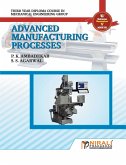"Advanced Treatment of Tannery Wastewater Contaminants" is an insightful and comprehensive guide written by Rema T, that delves into the complex world of tannery wastewater treatment. This book explores various aspects of tannery wastewater, including the contaminants and industrial waste produced, and how it affects the environment. The book focuses on advanced treatment methods to tackle the growing problem of tannery wastewater pollution. It discusses various advanced treatment methods, including membrane filtration, reverse osmosis, nanofiltration, ultrafiltration, electrocoagulation, adsorption, activated carbon, ion exchange, biological treatment, aerobic, anaerobic, bioreactors, biodegradation, microbial consortia, ozonation, photocatalysis, advanced oxidation, Fenton's reagent, hydrogen peroxide, coagulation, flocculation, sedimentation, sludge, dewatering, incineration, landfill, and their effectiveness in treating tannery wastewater contaminants. The book also highlights the importance of sustainability and social responsibility in the tanning industry, and how the circular economy and stakeholder engagement can help reduce the environmental impact of tannery wastewater treatment. Overall, "Advanced Treatment of Tannery Wastewater Contaminants" is an essential read for anyone involved in the tanning industry, environmental professionals, and policymakers. The book provides valuable insights into the latest techniques and technologies for treating tannery wastewater, the regulatory compliance, effluent standards, cost-effectiveness, process optimization, monitoring, analytical techniques, toxicity, biodegradability, and reuse and recycling.
Bitte wählen Sie Ihr Anliegen aus.
Rechnungen
Retourenschein anfordern
Bestellstatus
Storno








